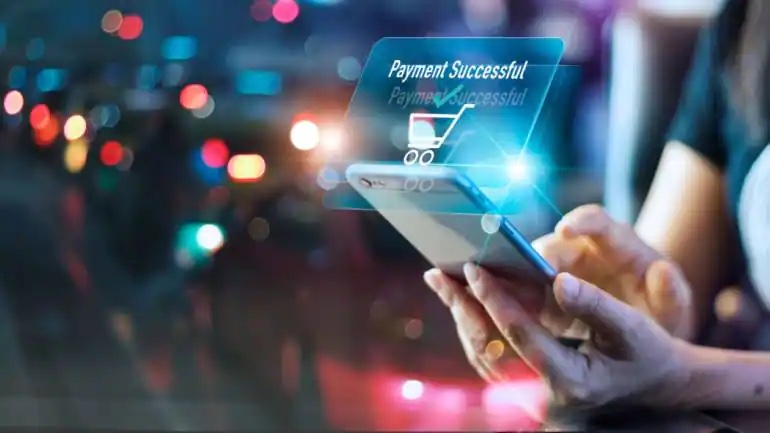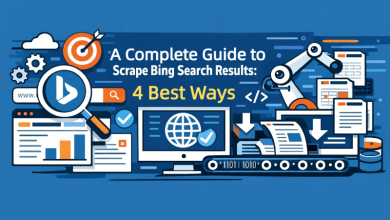
Online payments can feel like navigating a minefield for business owners. One wrong step and suddenly customers are abandoning their carts, chargebacks are piling up, and revenue takes a nosedive. The harsh reality? Most entrepreneurs stumble through payment gateway selection without understanding what they’re actually buying.
What Are Payment Gateways?
Think of payment gateways as the bouncer at an exclusive club – they check everyone’s credentials before letting them in. When Sarah from Seattle decides to buy those handmade earrings at midnight, the gateway springs into action faster than a caffeinated squirrel.
Payment gateways aren’t just simple money movers. They’re sophisticated security systems that scramble credit card numbers into unreadable code, ping banks for approval, and either give the thumbs up or shut things down. The whole process happens while customers are still deciding whether they really need that extra item in their cart.
Here’s the thing most people miss: three different parties are involved in every transaction. The customer wants to buy something, the business wants to get paid, and the bank wants to make sure nobody’s getting scammed. Payment gateways in the USA and across the globe referee this three-way conversation, making sure everyone plays by the rules.
Why Payment Gateways Matter for Your Business
Shopping cart abandonment rates hover around 70% across most industries – that’s seven out of ten potential customers walking away without buying. Poor payment experiences cause a huge chunk of these losses, yet many business owners treat checkout like an afterthought.
Consumers now demand that every online retailer operate with the same level of ease as Amazon. They want to pay using their preferred digital wallet, their phone, or their watch. Customers leave payment systems faster than children leaving school on a Friday afternoon.
Astute entrepreneurs understand that payment gateways provide important consumer data. Seasonal trends, preferred payment methods, and peak shopping hours are just a few examples of the data that may be used to optimize marketing campaigns and inventory management. However, a lot of business owners never explore these informational treasure troves.
Essential Features of Modern Payment Gateways
The difference between thriving businesses and struggling ones often comes down to choosing the best payment gateway for small business with the right feature set. Cutting corners here usually backfires spectacularly.
Security and Compliance
Data breaches make headlines because they destroy businesses overnight. Target, Equifax, and countless smaller companies learned this lesson the hard way. Security features aren’t optional extras – they’re business survival tools.
PCI DSS compliance might sound like alphabet soup, but it’s the difference between sleeping peacefully and getting 3 AM calls about stolen customer data. Tokenization replaces real credit card numbers with meaningless symbols, while SSL certificates create encrypted tunnels that keep hackers at bay. These features work behind the scenes, protecting both businesses and customers from financial disasters.
Multiple Payment Methods
Generation Z pays with Venmo, Baby Boomers prefer credit cards, and international customers might use payment methods most Americans have never heard of. Businesses that accommodate these differences capture more sales than those that force everyone into the same payment box.
Modern payment gateways support everything from traditional credit cards to cryptocurrency, buy-now-pay-later services, and regional payment methods. Each additional option opens doors to new customer segments. Why limit sales by accepting only Visa and Mastercard when customers want to pay with Apple Pay, Google Pay, or PayPal?
Mobile Optimization
Mobile commerce isn’t coming – it’s here. More than half of all online purchases happen on phones and tablets, yet many payment systems still feel like they were designed for desktop computers. Clunky mobile checkouts cost businesses millions in lost sales every day.
Mobile-optimized payment gateways understand that thumbs aren’t mouse cursors. Buttons need to be bigger, forms need to be shorter, and the whole process needs to work flawlessly on screens ranging from tiny phones to massive tablets. One-click payments and mobile wallet integration aren’t luxury features anymore – they’re basic requirements.
Real-Time Processing
Nothing kills shopping momentum like telling excited customers to wait 24-48 hours for payment confirmation. Real-time processing keeps the excitement alive and money flowing into business accounts faster than traditional processing methods.
Instant payment processing benefits everyone involved. Customers get immediate confirmation, businesses improve cash flow, and banks reduce fraud risk by catching suspicious transactions quickly. Delayed processing often leads to customer anxiety, disputed charges, and unnecessary customer service headaches.
Comprehensive Reporting
Payment data tells stories that most business owners never bother reading. Peak shopping hours, seasonal trends, popular payment methods – this information helps optimize everything from staffing schedules to marketing campaigns.
Advanced reporting features reveal patterns invisible to the naked eye. Maybe customers from certain regions prefer specific payment methods, or perhaps mobile users abandon carts more often on weekends. Smart business owners use these insights to fine-tune their strategies and boost conversion rates.
Choosing the Right Payment Gateway
Selecting payment gateways without understanding specific business needs is like buying shoes without knowing foot size. Sure, they might work, but comfort and performance will probably suffer.
Understanding Your Business Needs
E-commerce platforms need different features than subscription services. Restaurants require different capabilities than software companies. Rent collection apps need automated scheduling and tenant management tools that most standard gateways don’t provide.
Customer demographics matter too. Tech-savvy millennials expect cutting-edge payment options, while older customers might prefer familiar methods. Geographic location influences payment preferences – what works in New York might flop in rural Montana. Understanding these nuances helps narrow down gateway options.
Evaluating Costs
Payment gateway pricing resembles cell phone plans – confusing structures packed with hidden fees that make comparison shopping frustrating. Setup fees, monthly fees, transaction fees, chargeback fees – costs add up quickly when businesses don’t read the fine print.
Smart business owners calculate total costs based on realistic transaction volumes, not just advertised rates. A gateway charging 2.9% might actually cost more than one charging 3.1% if the first one includes additional fees for common services. Always request detailed pricing breakdowns before making decisions.
Integration Capabilities
Payment gateways should complement existing business systems, not force complete overhauls. Whether businesses use Shopify, WooCommerce, or custom software, seamless integration prevents headaches and saves development time.
API quality matters more than most people realize. Well-documented, developer-friendly APIs make customization easier and reduce technical problems. Poor APIs create ongoing frustration and limit future growth options.
Payment Gateways: Market Leaders
The American payment processing landscape features several major players, each with distinct advantages and drawbacks. Understanding these differences prevents costly mistakes and ensures better long-term results.
PayPal dominates consumer recognition and trust, but their fees can eat into profit margins. Stripe appeals to developers with clean APIs and comprehensive features, though non-technical users might find it overwhelming. Square offers integrated solutions perfect for small businesses, while Authorize.Net provides enterprise-level capabilities for larger operations.
Success depends on matching provider strengths with specific business requirements. Brand recognition means nothing if fees destroy profitability. Advanced features are worthless if they’re too complicated to implement. Customer support quality often matters more than flashy marketing promises.
Finding the Best Payment Gateway for Small Business
Small business owners juggle countless responsibilities, and payment processing expertise shouldn’t be required. The best payment gateway for small business operations removes complexity while delivering professional-grade functionality.
Budget constraints are real, but so are the costs of choosing poorly. Transparent pricing without hidden fees, quick approval processes, and helpful customer support make huge differences for resource-constrained businesses. Many small businesses benefit from all-in-one solutions that combine payment processing with inventory management, customer relationship tools, and accounting integration.
Why manage multiple systems when comprehensive solutions handle everything? Time saved on administrative tasks can be redirected toward growing revenue and serving customers better.
Common Implementation Challenges
Even the best payment gateway for small business can become disasters if implemented incorrectly. Learning from common mistakes saves time, money, and sanity.
Technical Integration
Not all companies have full-time developers on staff, and that’s quite OK. Payment gateway providers must to give thorough documentation, testing facilities, and real-world assistance in the event that issues occur.
In order to reduce technical complexity, modern gateways offer straightforward plugins and widgets. Advanced customization options should be subordinated to ease of deployment for businesses lacking technological competence. Rapidly achieving basic functioning is preferable to months of battling with intricate solutions.
Customer Experience
Even when a business excels in all other aspects, clumsy checkout procedures create a lasting bad impression. Frequent optimization and testing keep clients from running across annoying issues.
Conversion rates are greatly increased by guest checkout alternatives, saved payment methods, and unambiguous progress indications. Revenue increases from minor user experience enhancements are frequently significant. Issues that internal testing might overlook are brought to light by customer feedback.
Regulatory Compliance
Regulations governing payment processing impose severe consequences for noncompliance. Selected gateways ought to make compliance easier rather than more difficult.
Most business owners can’t expect to become compliance experts overnight. It makes more sense to collaborate with suppliers who handle maintaining company compliance and offer transparent paperwork regarding responsibilities rather than attempting to handle complicated requirements on your own.
Future Trends in Payment Processing
Rapid advancements in payment technologies necessitate keeping up with new developments and shifting consumer demands.
Fraud prevention and checkout experience personalization are already enhanced by artificial intelligence. Blockchain technology offers lower transaction costs and more security. Biometric authentication and voice-activated payments are moving from experimental to commonplace. Customers’ perspectives on purchases are changing as a result of buy-now-pay-later programs.
Businesses benefit more from payment gateways in the USA that exhibit creativity and flexibility as sectors continue to change. Clients gain a competitive edge from providers who adopt new technologies and update platforms often.
Making the Right Choice
Choosing a payment gateway is similar to selecting business partners in that compatibility is more important than glitzy features or special offers. Since these connections usually persist for years, it’s best to start them early to avoid problems later.
Better judgments are made when particular demands are thoroughly evaluated, several providers are compared, and long-term scalability is taken into account. Making quick decisions under the influence of sales pressure or short-term promotions frequently leads to regret later.
Budgets, growth objectives, and business strategies are all in line with the finest payment gateway. There are appropriate solutions available for firms that want either basic functionality or sophisticated capabilities. It takes time and careful consideration to find them.
Conclusion
Payment gateways function optimally when clients are unaware of them—that is, when transactions are smooth and take place automatically in the background. Everyone loses when they fail: firms lose sales, relationships are harmed, and customers become irate.
Payment experiences that satisfy clients and spur company expansion are produced by carefully weighing possibilities, selecting providers who meet particular wants, and comprehending important aspects. Higher conversion rates, better customer satisfaction, and less operational complexity are all ways that high-quality payment gateways produce returns.
Instead of buying commodities based only on price, astute business owners view the choice of payment gateway as a strategic decision that will affect their profitability for years to come. Long after implementation is finished, the investment made to get this right pays off.


